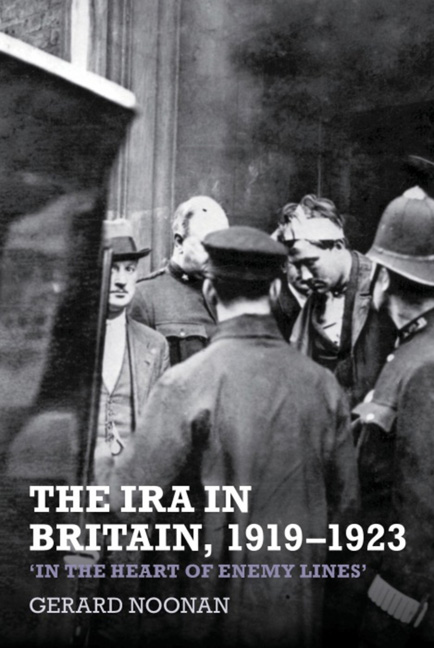Book contents
- Frontmatter
- Contents
- List of Illustrations
- List of Tables
- List of Graphs
- List of Abbreviations
- Acknowledgements
- Introduction
- Prologue
- 1 ‘On a Solid Footing’: Organizing Republicanism in Britain, January 1919–July 1921
- 2 Supplying an Army: Gunrunning in Britain, January 1919–July 1921
- 3 ‘We are doing what you are doing in Ireland’: IRA Operations in Britain, January 1919–July 1921
- 4 Truce, Treaty and Dissension, July 1921–June 1922
- 5 The Civil War, June 1922–May 1923
- 6 Combating the ‘Sinn Fein Movement’ in Britain: The Response of the Authorities, 1919–1923
- Epilogue and Conclusion
- Select Bibliography
- Index
4 - Truce, Treaty and Dissension, July 1921–June 1922
- Frontmatter
- Contents
- List of Illustrations
- List of Tables
- List of Graphs
- List of Abbreviations
- Acknowledgements
- Introduction
- Prologue
- 1 ‘On a Solid Footing’: Organizing Republicanism in Britain, January 1919–July 1921
- 2 Supplying an Army: Gunrunning in Britain, January 1919–July 1921
- 3 ‘We are doing what you are doing in Ireland’: IRA Operations in Britain, January 1919–July 1921
- 4 Truce, Treaty and Dissension, July 1921–June 1922
- 5 The Civil War, June 1922–May 1923
- 6 Combating the ‘Sinn Fein Movement’ in Britain: The Response of the Authorities, 1919–1923
- Epilogue and Conclusion
- Select Bibliography
- Index
Summary
I
The truce began at noon on 11 July. With Sinn Féin demanding British recognition of the Irish republic and Lloyd George's government refusing to countenance Ireland's withdrawal from the empire, the likelihood of a peace agreement seemed remote. Many Volunteers, therefore, saw the truce as brief respite before the inevitable resumption of hostilities. ‘I wonder if it would be possible to have a run down home for a few hours during this truce’, Offaly man Paddy Daly asked Michael Collins. Promising that he would be back at his post in Liverpool ‘within three or four days’, he too believed that the ceasefire was only temporary. Volunteers and Fenians in Britain, therefore, continued gun-smuggling and made arrangements for the recommencement of attacks. Consequently, it came as some surprise when Dublin and London reached an agreement in December. The ‘Articles of Agreement for a Treaty’ (known popularly as ‘the treaty’) divided the republican movement in Ireland and Britain and precipitated the outbreak of civil war in June 1922. This chapter, then, deals with republicanism when the pinnacle of its success precipitated its disaster. Sections II, III and IV deal with the truce period, discussing the problems experienced by the republican movement in Britain, along with gunrunning and the planning of attacks. Section V tackles the treaty, noting the arguments for and against of those closely associated with republicanism in Britain. Sections VI, VII and VIII address the period from January–June 1922, tracing the division among republicans regarding the merits of the treaty, continued gunrunning and the role the assassination of a Conservative MP played in the outbreak of the civil war. Section IX concludes.
II
In September and October 1921, Rory O'Connor toured IRA units in England, visiting London, Birmingham, Nottingham, Sheffield, Newcastle-upon-Tyne, Manchester and Liverpool. Membership of republican organizations seems to have peaked around this time. As we saw earlier, there were 682 Volunteers in 31 companies in England. Meanwhile, the Scottish Brigade comprised 49 companies with a combined membership of around 2,000. The total membership in Britain, therefore, in the autumn of 1921 was about 2,700. In addition, new companies were being organized in Tyneside, Leeds, Wolverhampton, Walsall and Swansea.
- Type
- Chapter
- Information
- The IRA in Britain, 1919–1923‘In the Heart of Enemy Lines’, pp. 186 - 228Publisher: Liverpool University PressPrint publication year: 2014



